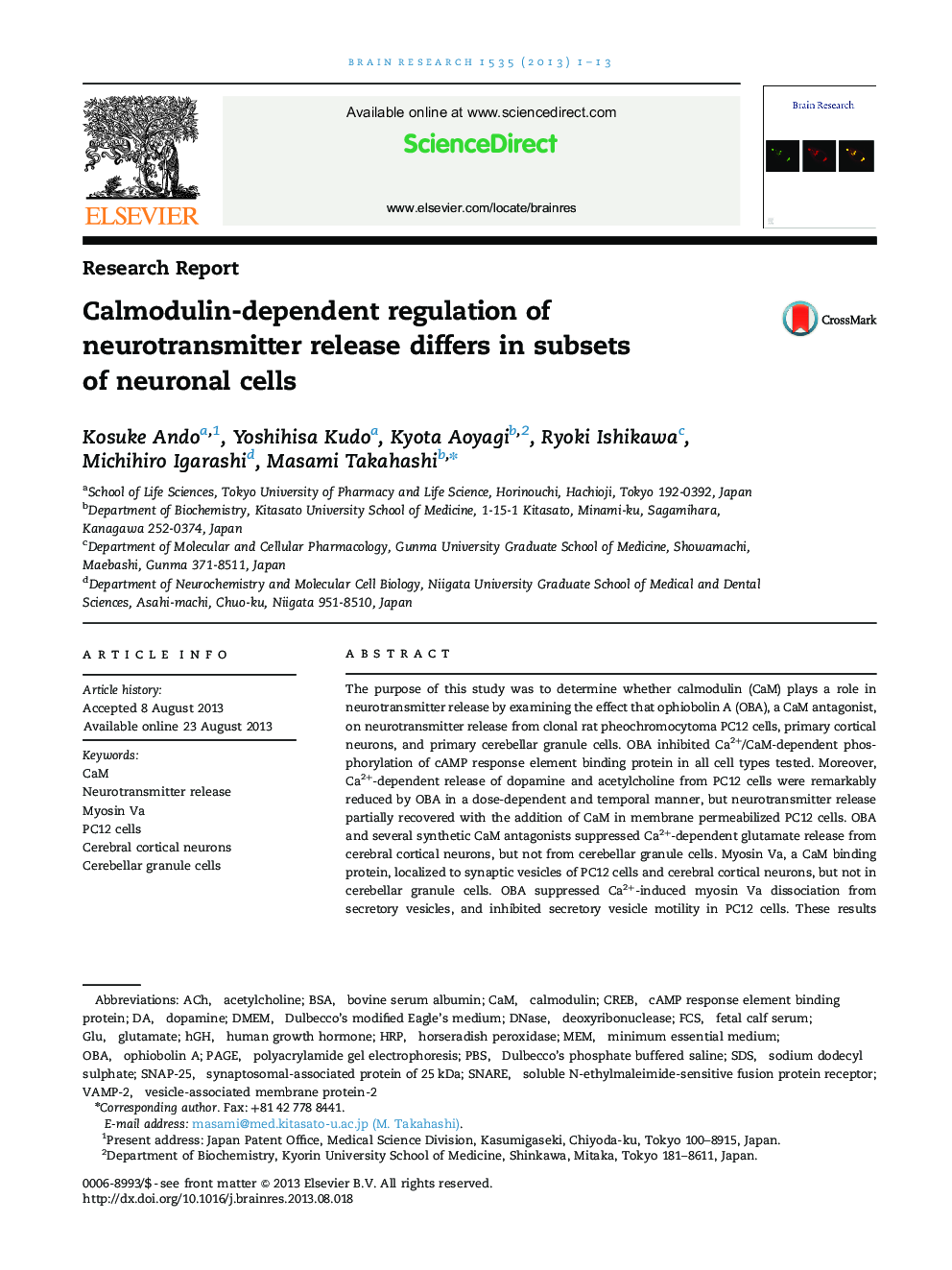| Article ID | Journal | Published Year | Pages | File Type |
|---|---|---|---|---|
| 6263621 | Brain Research | 2013 | 13 Pages |
â¢Ophiobolin A (OBA) is a potent calmodulin inhibitor.â¢OBA suppressed neurotransmitter release from only a subset of neuronal cells.â¢OBA suppressed Ca2+-induced dissociation of myosin Va from secretory vesicles.â¢Myosin Va was associated with secretory vesicles in a subset of neuronal cells.â¢Myosin Va may be a major target of OBA in the suppression of neurotransmitter release.
The purpose of this study was to determine whether calmodulin (CaM) plays a role in neurotransmitter release by examining the effect that ophiobolin A (OBA), a CaM antagonist, on neurotransmitter release from clonal rat pheochromocytoma PC12 cells, primary cortical neurons, and primary cerebellar granule cells. OBA inhibited Ca2+/CaM-dependent phosphorylation of cAMP response element binding protein in all cell types tested. Moreover, Ca2+-dependent release of dopamine and acetylcholine from PC12 cells were remarkably reduced by OBA in a dose-dependent and temporal manner, but neurotransmitter release partially recovered with the addition of CaM in membrane permeabilized PC12 cells. OBA and several synthetic CaM antagonists suppressed Ca2+-dependent glutamate release from cerebral cortical neurons, but not from cerebellar granule cells. Myosin Va, a CaM binding protein, localized to synaptic vesicles of PC12 cells and cerebral cortical neurons, but not in cerebellar granule cells. OBA suppressed Ca2+-induced myosin Va dissociation from secretory vesicles, and inhibited secretory vesicle motility in PC12 cells. These results suggest that CaM, although not essential, regulates neurotransmitter release in a subset of neurons and secretory cells, and myosin Va is a possible target of OBA in this process.
